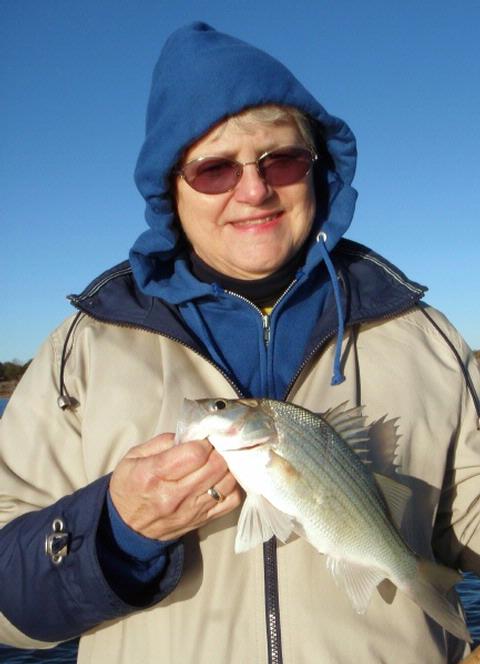I fished a quick morning outing accompanied by my mom, Charlotte. We knew going into this that things would be slow as the skies were clear, the water cold, and the very light winds from the NNW. I wanted to use this trip to take someone (my mom) totally unfamiliar with both sonar interpretaion and my “sniping” technique and get them from “0 to 60” over the span of the trip.
Start Time: 7:45a
End Time: 11:15a
Air Temp: 39F
Surface temp: 50.2F
Winds: Calm at trip’s start, beginning NNE at 3-4 around 9:00, tapering up to 8-9 and nearly due N by trip’s end.
Skies: Blue and clear
Because I’ve only recently refined this technique, I knew I needed to improve my presentation of it for my guests’ sake. Being able to take something complex and explain it clearly and quickly is trickier that one might think. As we worked together on this, we began looking over a stretch of river channel about 70 feet in length that clearly held a lot of bait.
At this particular area (Area 303), the channel, which is oriented SW to NE, bottoms out in over 50 feet. On the old W. bank, it forms a “stairstep” with the first landing occurring right around 43 feet, and the second occurring right around 34 feet.
This morning we found very sluggish gamefish on the bottom on the deeper of the two landings. I talked my mom through both jigging and sniping and differentiated for her when each would be most effective. We fished a total of 3 1/2 hours finding fish here and at Area 590, and catching a total of 15 fish including 14 legal white bass and a short crappie.
Mom was very happy to have caught those, but I was most interested in her “debriefing” comments following the trip.
As I reviewed with her our day, she brought out some real food for thought for me. The first thing I realized I need to do when it is likely that “sniping” will be employed on a particular trip, is to show my guests, right at dockside, the sonar display and all of the components of it, so that when we see fish targets and our lures, they can appreciate the relative positions of those objects, as well as the always-present bottom marks and surface clutter. The next thing I realized I need to address is retrieve speed. When I simply say “go slow”, that means nothing to a guest unless I’ve “calibrated” my guest to what “go slow” looks and feels like on sonar and in the rod tip, respectively.
I have already worked through all of these things with the slabbing, easing, and smoking tactics that I’ve used for years, but, with this new technique, we made some progress today and, no doubt, will continue to refine it as the water looks like it’s going to be cold for a good while longer.
TALLY = 15 Fish, all caught and released
***For a complete listing of gear and lures used, please go to the “About” tab, and click on the “About Your Guide” page on the drop-down menu.


